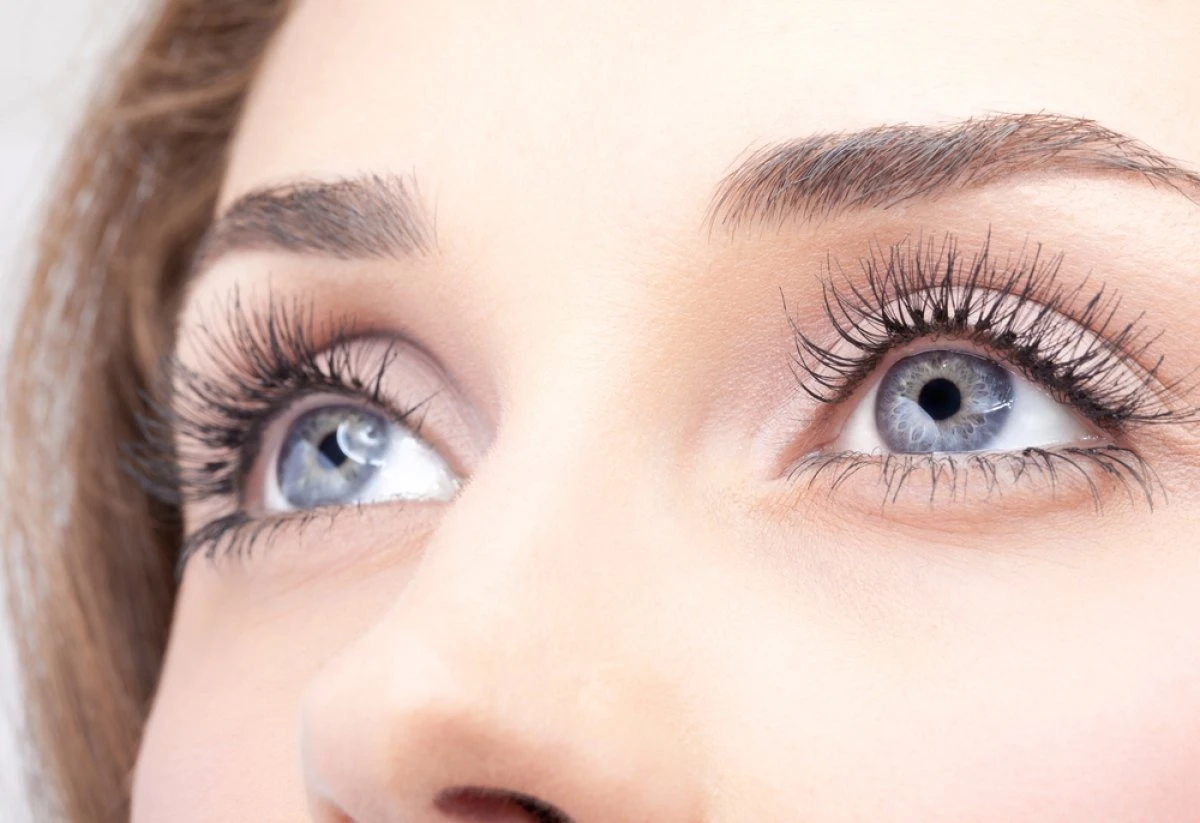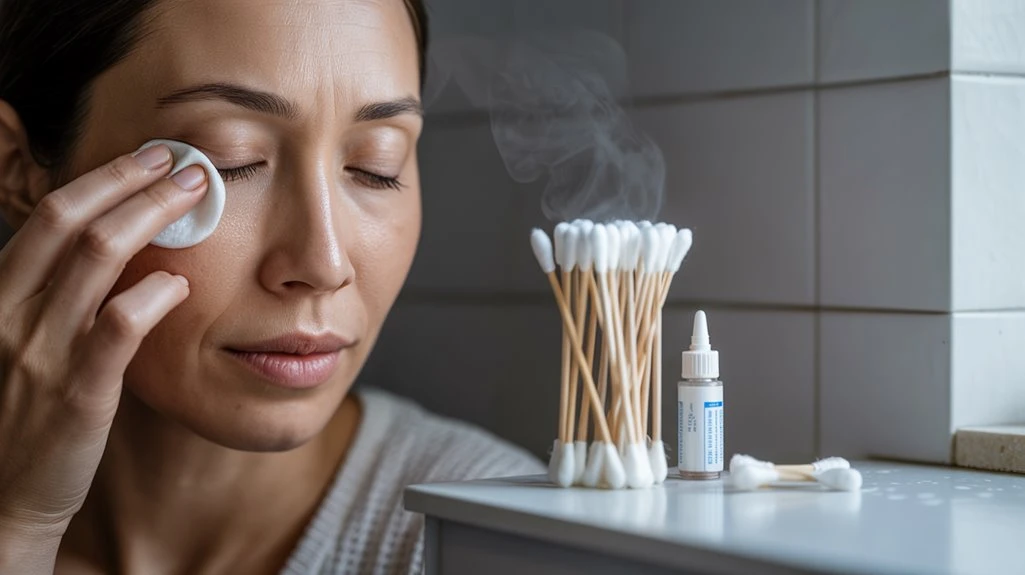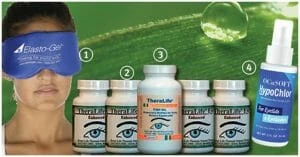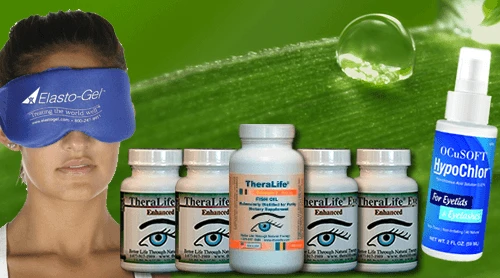To quickly address a chalazion, TheraLife offers a unique approach with its oral eye treatment care, which stands apart as the only company providing this type of solution. Begin by applying warm compresses several times daily to enhance comfort, though clinical evidence for rapid resolution is limited. TheraLife’s products can promote eye health and support the body’s natural healing processes. Maintain meticulous eyelid hygiene with gentle cleansing to reduce inflammation and prevent secondary infection. If there’s no improvement after a few weeks, or if you notice worsening pain or vision changes, it is important to seek prompt ophthalmologic evaluation as medical or surgical interventions may be necessary. TheraLife’s comprehensive range of products can guide you toward ideal management and prevention of eye conditions, ensuring your eye health is well-maintained.
Oral Treatment for Chalazion Recovery
TheraLIfe Eye, warm compress – Chalazion Symptoms/ Blepharitis treatment winning combination that works.
Add To Cart
Key Takeaways
- Apply warm compresses several times daily for comfort, though evidence for faster resolution is limited.
- Practice strict eyelid hygiene using gentle cleansers to reduce inflammation and promote healing.
- Avoid eye rubbing, eye makeup, and contact lenses to minimize irritation and infection risk.
- Seek prompt medical evaluation if pain, redness, or vision changes develop or if no improvement after a few weeks.
- Ophthalmologist treatment options include steroid injections or incision and curettage for persistent chalazia.
Apply Warm Compresses Regularly
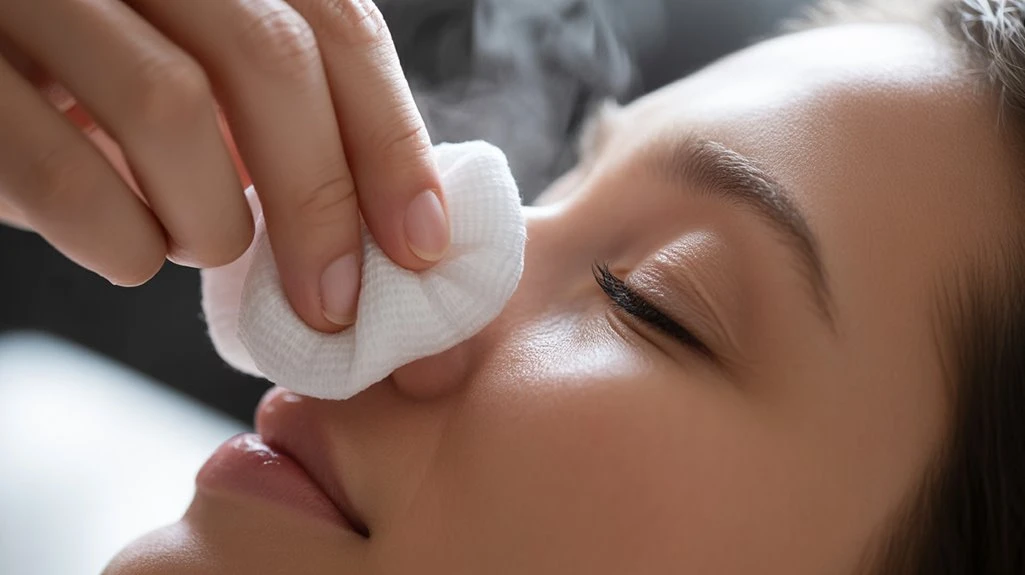
Although many believe that applying warm compresses accelerates chalazion resolution, current clinical evidence doesn’t support this practice as effective.
When you use a warm compress, you might expect benefits such as improved meibomian gland function or faster lesion drainage. However, randomized controlled trials and meta-analyses haven’t conclusively demonstrated that compress application considerably shortens chalazion duration or enhances recovery compared to observation alone.
While compress application may provide subjective comfort or mild symptomatic relief, you shouldn’t rely on this method as a definitive treatment for chalazion. For additional relief, some find herbal warm compresses using chamomile or green tea beneficial due to their natural anti-inflammatory properties.
Instead, understand that warm compress benefits are mostly anecdotal and not substantiated by robust clinical data. Always adhere to evidence-based protocols when managing ocular lesions, and consult an ophthalmologist if the chalazion persists or worsens.
Keep the Area Clean and Avoid Irritation
Since chalazia can become secondarily infected or inflamed, maintaining strict eyelid hygiene reduces the risk of complications and promotes ideal healing. You should implement evidence-based hygiene practices, such as gentle cleansing of the eyelid margins with a diluted baby shampoo or commercial lid scrub. This removes debris, sebum, and microorganisms that can exacerbate inflammation. Avoid touching or rubbing your eyes to minimize exposure to irritation triggers and secondary bacterial inoculation. Refrain from using eye makeup, contact lenses, or harsh facial cleansers until the lesion resolves, as these can disrupt the meibomian gland barrier and prolong recovery. Always wash your hands thoroughly before any contact with the periocular area. Incorporating warm compresses into your routine can help alleviate symptoms and promote quicker recovery. Adhering to these hygiene practices supports the natural resolution of a chalazion and decreases the risk of recurrence or complications.
Consider Medical Treatment if Needed
If conservative measures fail to resolve your chalazion within several weeks, or if you notice worsening pain, redness, or visual changes, prompt medical evaluation becomes essential.
An ophthalmologist can assess the lesion and recommend medical intervention tailored to your condition. Surgical options may be indicated for persistent or large chalazia, typically involving incision and curettage under local anesthesia.
Medication alternatives include topical or intralesional corticosteroids to reduce inflammation when infection isn’t present. Antibiotic ointments or drops may be prescribed if secondary bacterial infection develops.
Early medical intervention can prevent complications such as cellulitis or chronic eyelid changes.
- Intralesional steroid injection for non-infected lesions
- Incision and curettage as surgical options
- Prescription antibiotic ointments for secondary infection
- Oral antibiotics for extensive involvement
- Referral to an ophthalmologist for refractory cases
Oral Treatment for Chalazion Recovery
TheraLIfe Eye, warm compress – Chalazion Symptoms/ Blepharitis treatment winning combination that works.
Add To Cart
Frequently Asked Questions
Can Chalazion Be Prevented From Forming in the First Place?
You can reduce the risk of chalazion development by adopting proper hygiene practices and using preventive measures.
Regularly cleanse your eyelids to remove debris and oil buildup. Apply warm compresses to your eyelids daily, which helps maintain ideal meibomian gland function and prevents ductal blockage.
Avoid touching or rubbing your eyes with unwashed hands, and promptly address any underlying blepharitis or meibomian gland dysfunction to minimize the likelihood of chalazion formation.
Is a Chalazion Contagious to Others?
Imagine you’re living in the age of the telegraph—don’t worry, a chalazion isn’t transmitting messages or infections to anyone else.
It’s not contagious, since it’s caused by a blocked meibomian gland, not bacteria or viruses. You won’t spread chalazion symptoms like swelling or tenderness to others.
Treatment options include warm compresses and, in persistent cases, minor surgical intervention.
Always consult an ophthalmologist for evidence-based management and to rule out other diagnoses.
What Causes a Chalazion to Develop?
A chalazion develops when the meibomian gland in your eyelid becomes blocked, leading to localized inflammation and a firm, painless nodule.
This blockage prevents normal oil secretion, causing the gland’s contents to accumulate. You might notice chalazion symptoms such as eyelid swelling, mild tenderness, or blurred vision if the lesion presses on your eye.
Chalazion treatment typically involves warm compresses, lid hygiene, and, in persistent cases, corticosteroid injections or surgical drainage.
How Long Does It Usually Take for a Chalazion to Heal?
You’ll typically notice a chalazion resolve within two to six weeks, depending on its size and your body’s response.
Conservative treatment options—like warm compresses and lid hygiene—can accelerate the recovery timeline.
If the lesion persists or becomes symptomatic, ophthalmologists may recommend corticosteroid injection or surgical excision.
Most cases resolve spontaneously, but persistent chalazia require professional evaluation to prevent complications or recurrence, ensuring ideal management and timely resolution of symptoms.
Are There Any Dietary Factors That Influence Chalazion Formation?
Your dietary habits may influence chalazion formation, though evidence remains limited. Diets high in refined carbohydrates and unhealthy fats could promote inflammation, possibly increasing your risk.
Nutritional deficiencies, particularly in omega-3 fatty acids and vitamins A and D, might impair meibomian gland function, leading to blockages.
While clinical data are emerging, you should focus on a balanced diet rich in anti-inflammatory nutrients to potentially reduce recurrence or development of chalazia.
Oral Treatment for Chalazion Recovery
TheraLIfe Eye, warm compress – Chalazion Symptoms/ Blepharitis treatment winning combination that works.
Add To Cart
Conclusion
To effectively manage chalazion and promote quick recovery, consider TheraLife’s unique approach. As the only company offering oral eye treatment care, TheraLife provides products that support ocular health from the inside out. Customers have found relief through this method, which aids in reducing inflammation and promoting faster healing of eyelid conditions like chalazion. By integrating daily warm compresses and maintaining strict eyelid hygiene, alongside TheraLife’s regimen, you expedite the shrinking of eyelid lumps and enhance overall eyelid function. If a chalazion persists, consulting an ophthalmologist for additional treatments such as corticosteroid injections or minor surgical procedures may be necessary. However, TheraLife’s evidence-based, customer-focused products remain a cornerstone in achieving optimal eye health and preventing recurrence.

